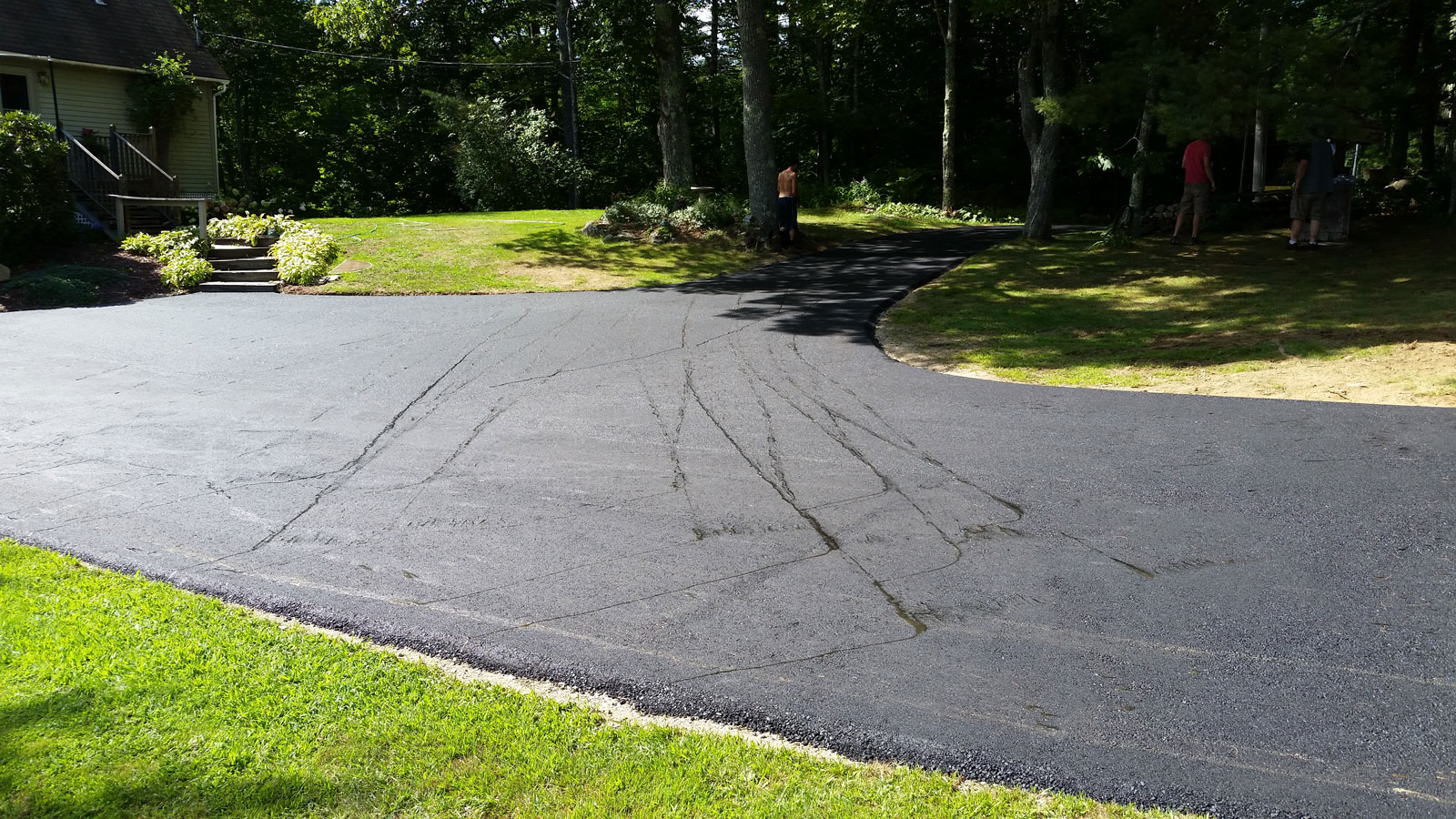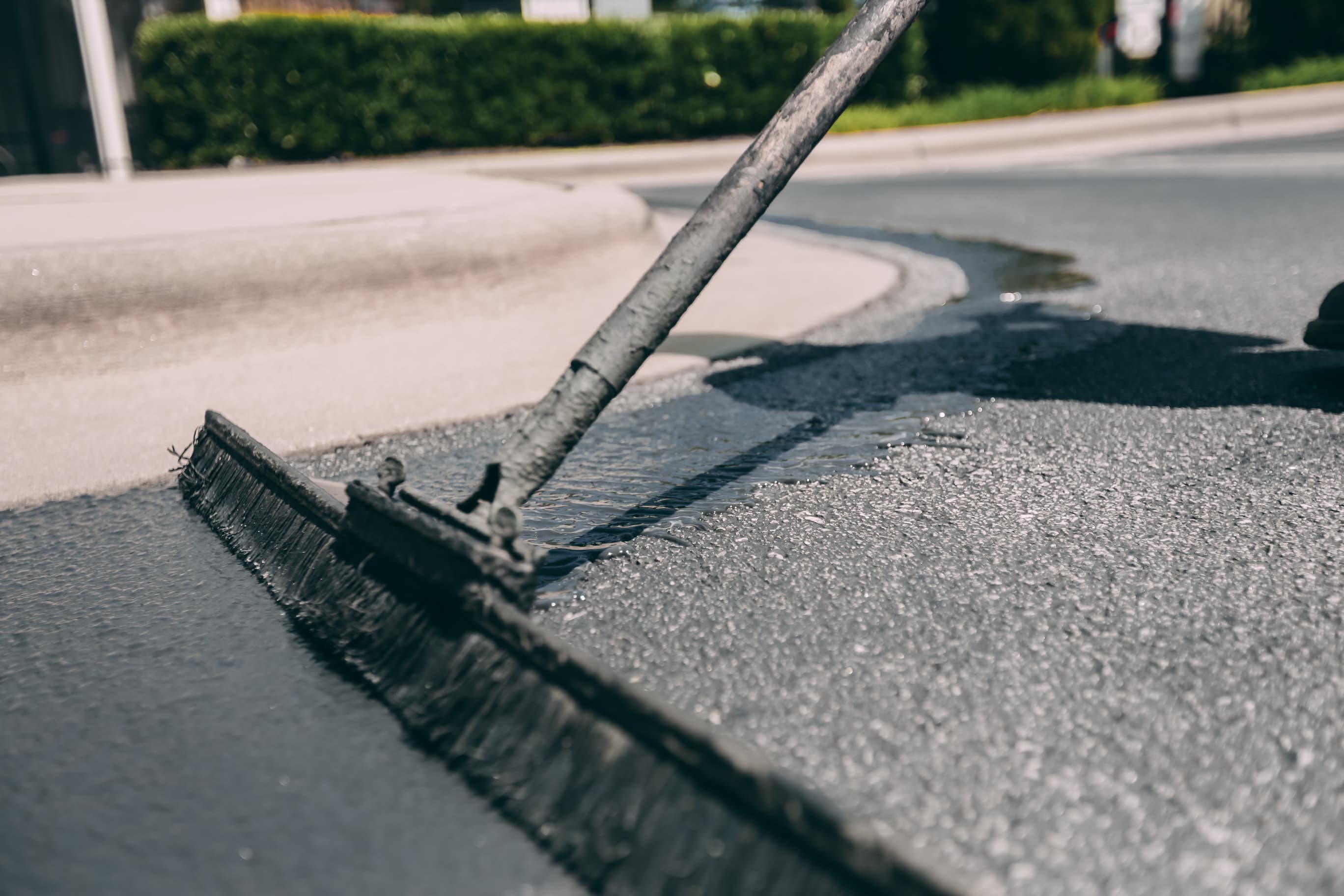Hot Mix Asphalt: A Sustainable Option for Sidewalk
Hot Mix Asphalt (HMA) has actually emerged as a leading sustainable selection for pavement services, supplying a myriad of ecological benefits and cutting-edge innovations. As the need for environmentally friendly building practices expands, exploring the subtleties of HMA's sustainability can offer valuable understandings into the future of sidewalk services.
Environmental Benefits of Warm Mix Asphalt

Additionally, Warm Mix Asphalt aids to reduce city heat island effects. Its dark color takes in sunshine, minimizing the amount of warmth reflected back right into the atmosphere compared to lighter-colored sidewalks. This can reduce ambient temperatures in city areas, reducing the need for air conditioning and ultimately minimizing power consumption.
On top of that, Hot Mix Asphalt adds to boosted stormwater management. Its porous nature allows water to penetrate the sidewalk and reenergize groundwater materials, reducing runoff and the risk of flooding. These environmental benefits make Warm Mix Asphalt a sustainable choice for paving highways and roads.
Energy Effectiveness in HMA Production
Is energy effectiveness an essential consider the manufacturing of Hot Mix Asphalt (HMA)? Definitely. Power plays a considerable duty in the manufacturing of HMA, impacting both expense and ecological sustainability. One key element of power effectiveness in HMA production is the use of cozy mix asphalt (WMA) modern technologies (commercial parking lot paving). WMA enables the mixing and positioning of asphalt at reduced temperature levels compared to typical hot mix asphalt, resulting in decreased energy intake throughout manufacturing. This process not just lowers fuel usage yet also decreases greenhouse gas discharges, making it a more ecologically friendly option.
Furthermore, improvements in plant technologies have led to even more energy-efficient HMA production processes. By enhancing energy usage in HMA manufacturing, the market can lower its carbon impact while preserving high-grade pavement materials.
Recyclability of Hot Mix Asphalt
The recyclability of Hot Mix Asphalt (HMA) is a crucial aspect of its sustainability and long-lasting ecological effect. HMA is among the most recycled products in the USA, with over 100 million bunches of redeemed asphalt sidewalk (RAP) being reused each year in brand-new sidewalk building. Reusing HMA supplies several environmental benefits, such as reducing the need for virgin materials, decreasing energy usage throughout production, and decreasing the quantity of waste sent out to landfills.
The procedure of reusing HMA entails milling the existing sidewalk, crushing it into smaller pieces, and mixing it with brand-new accumulation and asphalt binder to produce a recycled mix. In general, the recyclability of HMA plays a substantial duty in advertising lasting practices within the sidewalk industry.

Long-Term Efficiency of HMA
Asphalt pavements demonstrate durability and durability over an extended duration, showing the lasting efficiency of Hot Mix Asphalt (HMA) The durability of HMA can be associated to its capability to endure hefty web traffic lots, severe climate condition, and the results of aging. Researches have actually revealed that properly designed and effectively constructed HMA sidewalks can last for two decades or more with routine maintenance. The key to making the most of the long-lasting efficiency of HMA hinges on making use of top notch materials, following ideal techniques in building and construction, and carrying out reliable upkeep strategies. Proper water drainage, regular examinations, and timely repairs are vital for preserving the architectural honesty of HMA sidewalks with time. In addition, innovations in HMA innovation, such as making use of polymer-modified binders and cozy mix asphalt, have even more enhanced the toughness and durability of HMA pavements. By prioritizing quality building and construction and maintenance practices, HMA remains to confirm itself as a affordable and sustainable remedy for resilient pavement facilities.

HMA: Toughness and Sustainability
Showing both longevity YOURURL.com and sustainability, Hot Mix Asphalt (HMA) has become a foundation in the building of durable sidewalk frameworks - regrading. HMA's toughness stems from its ability to stand up to heavy tons, severe climate condition, and high traffic volumes, making it a reputable option for streets, highways, and airport paths. The composition of HMA, which commonly includes aggregates, binder, and filler, plays a vital role in visit this web-site boosting its longevity and resistance to tear and put on
Furthermore, HMA's sustainability exists in its recyclability and energy-efficient manufacturing process. The capability to recycle reclaimed asphalt pavement (RAP) in new HMA combinations reduces the demand for virgin products and decreases the environmental impact of pavement building and construction and maintenance. Additionally, the energy performance of producing HMA hinges on its lower mixing temperatures contrasted to various other sidewalk products, leading to decreased energy usage and greenhouse gas exhausts.
Conclusion
In conclusion, warm mix asphalt (HMA) supplies a sustainable service for sidewalk with its ecologically pleasant attributes. HMA's recyclability, energy effectiveness in production, and long-lasting sturdiness make it an eco-friendly option for road building and construction.
HMA is one of the most recycled materials in the United States, with over 100 million loads of redeemed asphalt pavement (RAP) being reused every year in new sidewalk building.The procedure of recycling HMA entails grating the existing pavement, squashing it into smaller sized pieces, and blending it with new accumulation and asphalt binder to create a recycled mix.Asphalt sidewalks demonstrate durability and durability over an extended duration, showing the lasting efficiency of Warm Mix Asphalt (HMA) In addition, improvements in HMA their explanation technology, such as the use of polymer-modified binders and warm mix asphalt, have actually further improved the resilience and longevity of HMA sidewalks. The capacity to reuse redeemed asphalt pavement (RAP) in brand-new HMA mixtures decreases the need for virgin materials and reduces the ecological impact of pavement building and construction and maintenance.